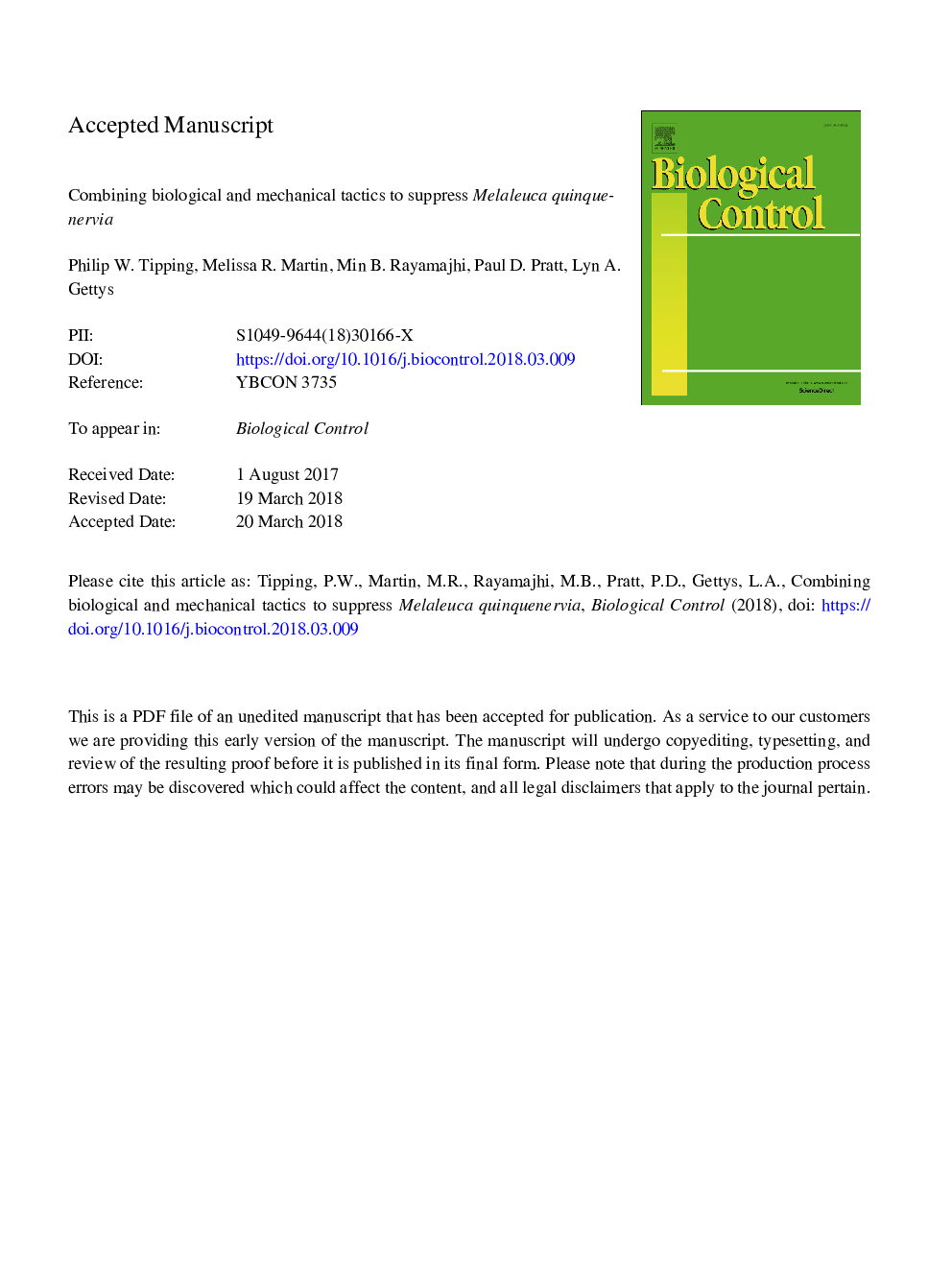| Article ID | Journal | Published Year | Pages | File Type |
|---|---|---|---|---|
| 8877689 | Biological Control | 2018 | 23 Pages |
Abstract
A four year common garden study was initiated using once-cut Melaleuca quinquenervia trees that were subsequently subjected to a full factorial of treatments that included reduced versus unrestricted herbivory from biological control agents, a mechanical treatment (trees were not cut or were cut every 6â¯m), and an irrigation treatment (trees were irrigated or not). Repeated cutting reduced the total tree biomass by 76.4%, herbivory alone reduced total biomass by 58.7%, and the combination of cutting and herbivory reduced total biomass by 80.1%. Unrestricted herbivory reduced the seed biomass per tree by 93.9% in uncut trees while repeated cutting eliminated all seed production regardless of herbivory. Uncut trees subjected to unrestricted herbivory allocated an average of 8.8% of their biomass to reproductive tissue, while those exposed to restricted herbivory allocated an average of 15.8%. Unrestricted herbivory by biological control agents on uncut trees also reduced the total number of seed capsule clusters by 79.2%, the number of capsules per cluster by up to 20.8%, and the individual seed weight by up to 58.9%. Repeated cutting did reduce the amount of damage to regrowth by one biological control agent, Oxyops vitiosa (Coleoptera: Curculionidae), but did not reduce the abundance another, Boreioglycaspis melaleucae (Hemiptera: Psyllidae). Trees that were only cut once at the initiation of the study exhibited vigorous regrowth, including increased height and seed production. The mortality of trees was lower compared with other studies, highlighting the influence of localized biotic and abiotic factors on the cumulative suppressive effects of cutting and herbivory on M. quinquenervia.
Keywords
Related Topics
Life Sciences
Agricultural and Biological Sciences
Agronomy and Crop Science
Authors
Philip W. Tipping, Melissa R. Martin, Min B. Rayamajhi, Paul D. Pratt, Lyn A. Gettys,
